Joint optimization of cluster number and abundance transformation for obtaining stable vegetation classifications
Lengyel A, Landucci F, Mucina L, Tsakalos J & Botta-Dukát Z
The choice of abundance transformation and the number of clusters are among the most important methodological decisions influencing the outcomes of vegetation classifications. The optimal number of clusters is routinely sought for by calculating cluster validity indices (e.g. Optimclass, average silhouette) for classifications of different number of clusters. In contrast, there are very few examples in the literature when the optimal abundance weighting is selected on the basis of evaluating classifications made by systematically changing the data transformation function. Here we present a protocol for finding the combination of abundance transformation function and cluster number which results in the most stable, that now we deem the ‘best’, classification. We show how the optimal values of these two variables co-vary, and how different decisions on any of them can change the classification patterns.
We used real data sets representing Hungarian grasslands, European wetlands and Australian kwongan vegetation, as well as simulated data for testing relationships between abundance weighting, number of clusters and stability. We classified the data sets with changing cluster number and exponent of the power transformation in all possible combinations using the partitioning around medoids non-hierarchical method. The stability of classifications was assessed by mean Goodman & Kruskal’s lambda. The stability values are plotted on a heat map where the horizontal and the vertical axes are defined by the exponent and the cluster number, respectively, and the color intensity of the cells reflect the stability obtained by the actual combination of parameter values. Thus, the most stable classification can be found at the most intensively colored cell. The relationship between optimal values for the exponent and the number of clusters varied significantly among data sets. In cases of data sets with uneven abundance distribution of species within plots, very different numbers of clusters proved optimal when low and high weight were given to the most dominant species. In contrast, when species abundances varied less, the optimal number of clusters changed little along different values of the exponent. Nevertheless, classifications with the same number of clusters but different abundance transformation can reflect significantly different biological processes. The mean Goodman & Kruskal’s lambda successfully identified the optimal number of clusters for most simulated data sets.
Az előadásban egy új eljárást javasoltam az adattranszformáció mikéntje és a csoportszám legjobb osztályozáshoz vezető kombinációjának megtalálására.
A diasor letölthető innen. A témáról bírálat alatt áll egy cikkünk - remélem, hamarosan megjelenik, és akkor megoszthatom a részleteket.
A konferencián három kirándulási útvonal közül választhattak a résztvevők, én a
Monte Bucierót és a
Noja melletti tengerpartot magában foglaló programot választottam. Az eső miatt sajnos inkább a telefonommal, mint a fényképezőgépemmet fotóztam, ez a minőségen sajnos meglátszik.
Monte Buciero
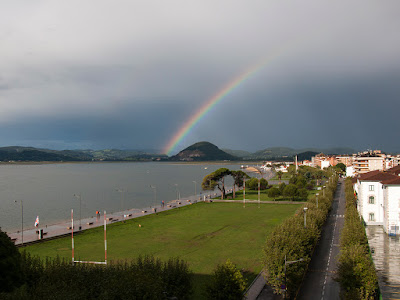 |
| Épp csak megkezdtük a kapaszkodást a hegyre, és ez a látvány fogadott |
 |
| Magyaltölgy (Quercus ilex), a hegy reliktum erdeinek uralkodó fafaja |
 |
| Polypodium cambricum |
 |
| Magyaltölgyes bokorerdő |
 |
| A kilátás fentről 1 ... |
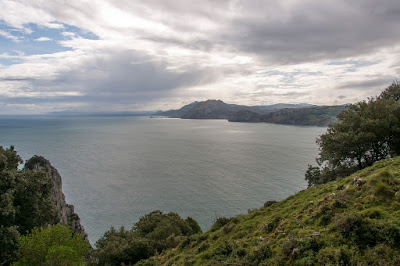 |
| ... 2 |
 |
| Asplenium onopteris |
Noja
 |
| Tengerparti-liliom (Pancratium maritimum) |
 |
| Tengeri kömény (Crithmum maritimum) |
 |
| Tengerparti sziklák, a Crithmum tipikus élőhelye |
 |
| Asplenium marinum egy tengerparti rom falán |
 |
| Ulex gallii |
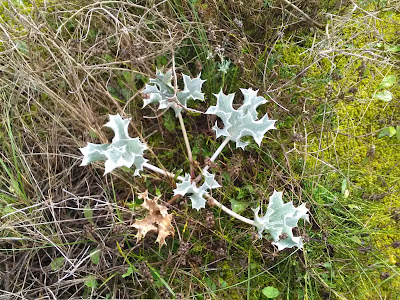 |
| Tengerparti iringó (Eryngium maritimum) |
 |
| Tengerparti fenyér |
 |
| Juncus acutus |
 |
| Halimione portulacoides |
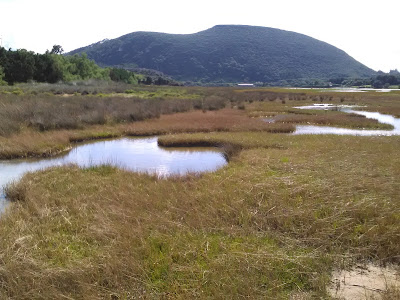 |
| Sós mocsár a folyótorkolatban |
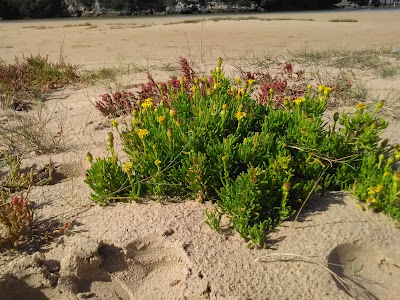 |
| Inula crithmoides |
A konferenciarészvételt a GINOP 2.3.3-15-2016-00019 projekt finanszírozta.


















Nincsenek megjegyzések:
Megjegyzés küldése